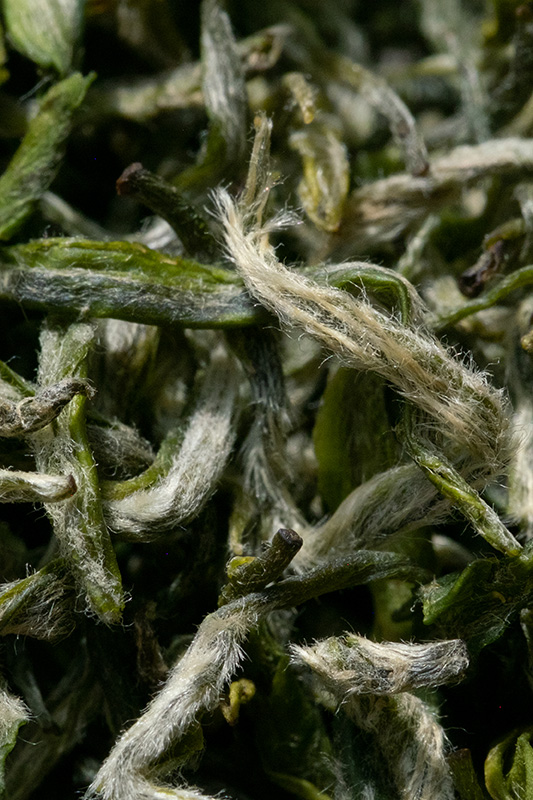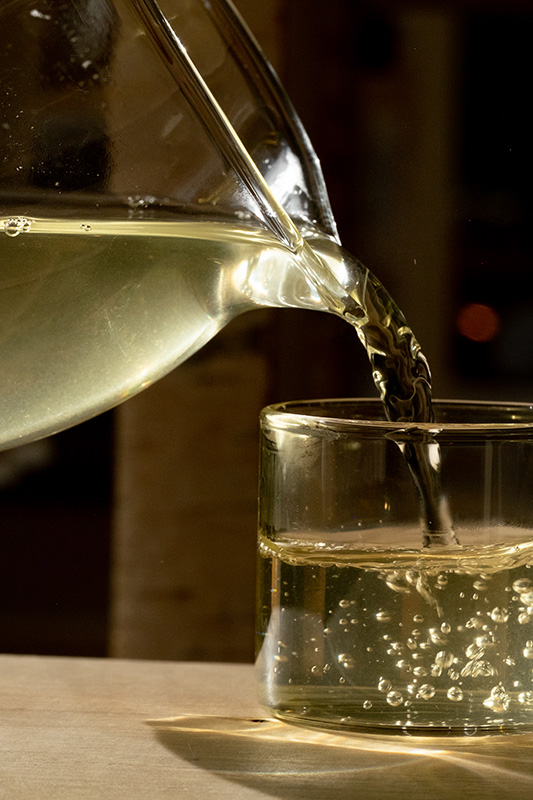On our tea journeys through the Mountain cliffs of Ya’an, we were able to secure a very small batch of freshly picked Gan Lu from the Meng Ding Mountain range. When Yiling first found out I loved tea – she took me to Meng Ding the first time I visited her in Sichuan, knowing that as a tea lover going to the mountain where tea was first cultivated would blow my mind to be drinking tea where the world of tea began. We stayed at a tea farm, and I still remember waking up to a beautiful sea of fog with the mountain peaks sticking out like islands and the fog turning into morning dew on the tea leaves.
All the more special for us to have this amazing tea from this special place for us. Our Gan Lu is made from Old Chuan Cha (老川茶) cultivar that comes from an old stone tea garden in Mt. ZhouGong (one of the 5 mountains of Meng Ding). Unlike plantation Gan Lu, this farm is Sheng Tai (natural/untouched tea garden) which uses permaculture biodiversity techniques to facilitate the tea growth. Gan Lu is picked as just fresh buds (the most chemically rich part of the tea plant) just emerging from its first leaf, then goes through a difficult and laborious process of frying, kneading, and filtering three times.
In addition to the quality of the raw leaf material, Mengding Ganlu’s “Three Times Fry and Knead” processing method is another important element that results thegood quality of tea. Before processing, it is necessary to use a dustpan to screen out the miscellaneous leaves mixed in the buds before the tea leaves are put into the pot to killgreen.
Before frying, tea maker needs to feel the temperature of the iron wok with the back of his hand. We say the temperature is the essence of frying tea, and the tea master doesn’t need gloves nor thermometer to fry the tea leaves.
When the temperature reaches the ideal degree, about 0.75kg of fresh leaves are poured into the hot wok and stir-fried continuously with both hands. You can hear the buds popping in the constant heat. After a few minutes, take out the fried tea leaves and knead them repeatedly on the prepared dustpan. This is the first time frying and kneading. After each kneading is completed, the miscellaneous leaves should be sieved. Then carry out the second frying and kneading. There is the third time of frying and kneading, and this round the frying time is the longest.
After three times of frying and three kneading, the sieved tea leaves need to be “shaped”. This process is important as it fixes the final tea leaves’ shape and their characteristics. Tea maker put the kneaded leaves into theqok again, grab the tea leaves with both hands, and hold them with five fingers forming a ball in between two palms, then knead the tea for 4-5 turns, sprinkle it into the wok, and repeat this several times. The fire for this process is also the smallest (tenderest?), and no open flames can be seen in the stove.
Before the last fine drying step. It is necessary to sieve the finished tea leaves with a bamboo sieve to remove the fines. The tea maker will gather the tea leaves made that day, spread them out on the dryer, and dry them for 20 minutes.
In fact, about 2.5kg of fresh leaves can only be made into 0.5kg of dry tea after such a whole day of labor. The best materials are all made by hand on the tea mountain.
🌱🌱🌱







Rainer Schneckenleitner (verified owner) –
Amazing tea! A must-try for everyone who is interested in green tea. Fresh and rich umami taste. I only used the Gōng Fū Chá Style for brewing this tea, but which led for me to incredible tea drinking experiences.